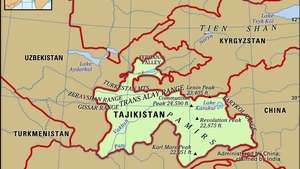Tajikistan:

Taliban forces have swept across Afghanistan, finally capturing the capital city of Kabul. As people are desperately trying to leave Afghanistan, many will likely seek refuge in neighbouring Tajikistan.
- First, Tajikistan will have to consider the sentiments of Afghan-Tajiks, some who have been welcomed in the Taliban’s ranks but the majority of whom passionately reject the group.
- Second, Dushanbe will be cognisant of the rise in extremism caused by the dominance of the Taliban, and the impact it will have on radical factions within Tajikistan who aim to establish an Emirate of their own.
- Thirdly, Tajikistan will have to find ways to police its porous border with Afghanistan in order to prevent illicit drugs and refugees from overflowing into the country.
- Tajikistan lies on Afghanistan’s northeastern border, adjacent to the Afghan provinces of Badakhshan, Takhar, Kunduz and Balkh.
- The 1200-km border is also home to the junction between the Hindu Kush and Karakoram Mountains, and is characterised by its rocky, inhospitable terrain.
- For a long time, Tajikistan was considered to be under the influence of the Persians, and many ethnic Tajiks residing in Afghanistan retain similar cultural values.
- Today, Tajikistan, a small landlocked Central Asian nation, has a predominantly Muslim population and is largely considered to be undemocratic, volatile, and economically unstable.
- Until 1991, Tajikistan was a part of the Soviet Union.
- When Moscow invaded Afghanistan in 1979, Tajikistan, along with the other Soviet Socialist Republics in Central Asia, supported the takeover.
- Tajikistan’s support for the Soviets made them a target of the Afghan Mujahadeen who launched attacks against the country in 1987. Due to the close cultural and kinship ties between Afghanistan and Tajikistan, many Tajiks secretly joined the Afghan jihad, fighting alongside the Mujahadeen




